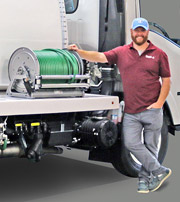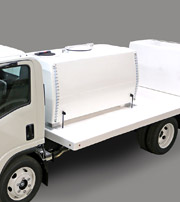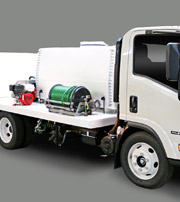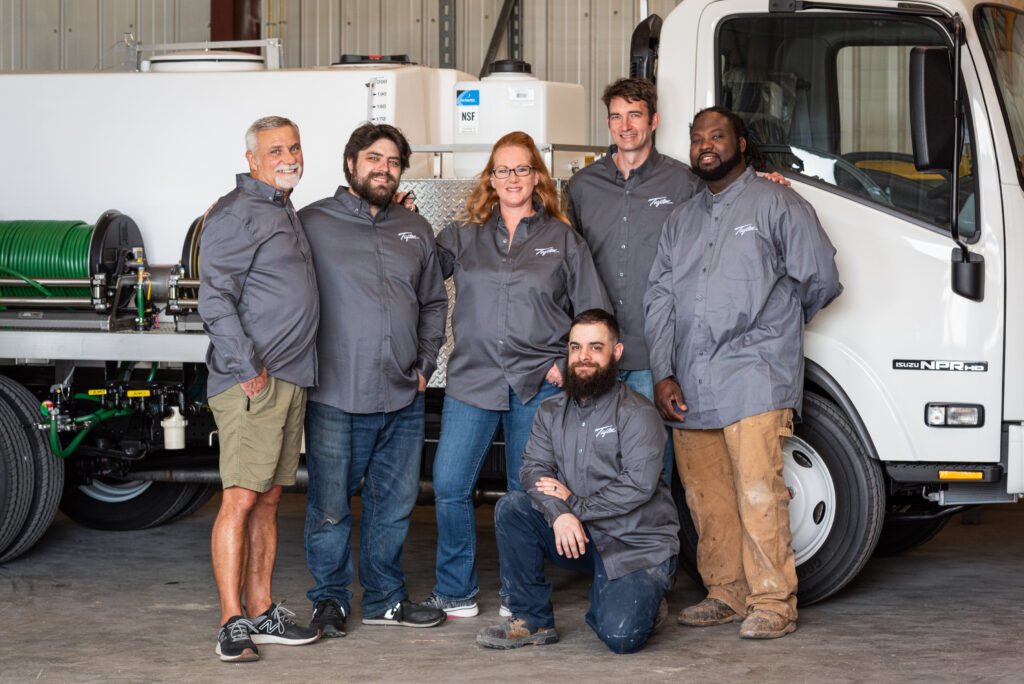We’re sometimes asked why our tanks are made from fiberglass, and what’s special about their high-gloss white gel exteriors. The answers to those questions are what sets Tuflex apart from other tank manufacturers.
FIBERGLASS
The word “fiberglass” is casually used to refer to several different products. Its original form is sometimes differentiated by calling it “glass wool.” This is the form accidentally discovered in 1932 by a researcher at glass manufacturer Owens-Illinois (later part of Owens Corning). In this form, it’s the most popular form of thermal insulation for buildings.
The type used to make Tuflex tanks is a composite that’s often called FRP, an abbreviation of fiberglass-reinforced plastic. It’s strong, non-magnetic, doesn’t conduct electricity, and is chemically inert under most conditions. Electromagnetic radiation passes right through it. It’s flexible enough to be molded into a wide variety of complex forms. It’s no surprise that it’s put to countless uses all around us, from cars and airplanes to bathtubs and surfboards.
For many years, fiberglass storage tanks were considered inferior to those made from polyethylene. Fiberglass’s superior strength and integrity means it can be used at far greater scale; fiberglass tanks have been constructed that can hold roughly 300 tons. Fiberglass is also more resistant to chemical corrosion and expands less as temperatures rise. However, poly tanks could be molded as a single form, while fiberglass tanks were assembled from pieces. The resulting seams could result in leaks and so required frequent, careful inspections.
THE TUFLEX TOUCH
Mike Sayward, the founder of Tuflex, invented and patented the seamless tank design that makes the company unique. It’s no exaggeration to say that he revolutionized the manufacture of fiberglass tanks. The lack of seams guarantees the integrity of both the exterior of the tank and any bulkhead walls inside it. A tank that’s crafted as a single piece is only as strong as its weakest point. Tuflex manufacturing requires the care and attention to detail that only the human touch can provide. Erika Michajlyszyn, the company’s head of sales and manufacturing (and granddaughter of our founder) describes it this way:
“It’s a very complicated process. The tanks are a product that is in high demand but can’t be produced quickly. It’s not something that you can just pump out — it’s a very hands-on process. Everything that is done on these tanks is hand-laid or hand-made. None of it can be automated.”
The finishing touch is provided by high-gloss white gel coating. The gel ensures a completely smooth surface, with no drips or other signs of the way it was applied. The white color and high-gloss finish make the tank highly reflective, ensuring that its contents don’t heat up. (The fact that this shiny white surface provides the perfect background for your company’s logo is entirely coincidental.)
THE PROOF IS IN THE PERFORMANCE
Under ideal conditions, a poly tank’s useful life is about 10 to 15 years. By contrast, it’s not unusual for a fiberglass tank to last 20 to 30 years, even when it’s used to store potentially corrosive chemicals. One satisfied customer, Brian Rickman of Pinkerton’s Turf Services, reports: “We have been purchasing from Tuflex for years. There are tanks we purchased 30 years ago that are still in production today. The proof is right there.”
If you have questions about Tuflex tanks or our other products, call 954.785.6402 or visit tuflexmfg.com/contact-us/.






